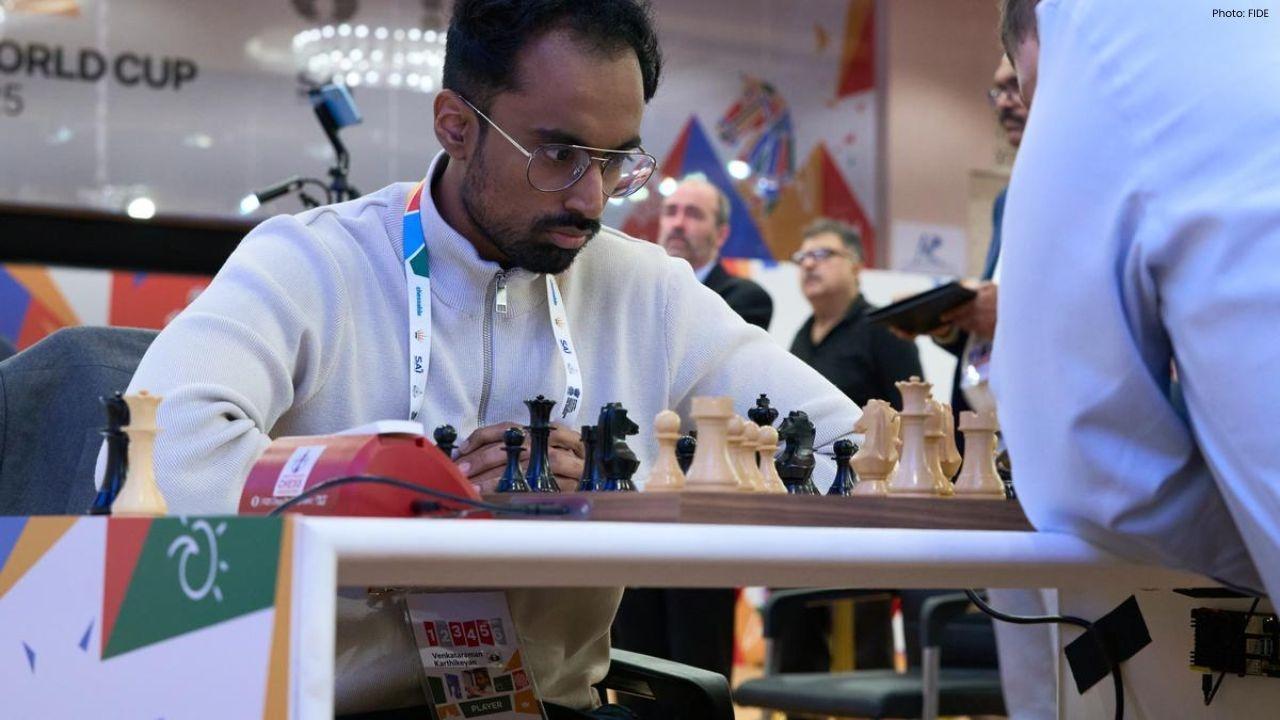
Post by : Anis Al-Rashid
Fingerprints have long been the cornerstone of digital security, allowing users to quickly unlock devices and gain access to various systems. However, with advancing technology and increasing security threats, the quest for more reliable identification methods has intensified.
We are now witnessing a significant shift where modern identity verification transcends traditional methods. Today, factors such as your vocal patterns, vein structures, and behavioural cues are emerging as valid identifiers.
This evolution highlights the move towards highly personalized identity security, catering to enhanced safety and fraud prevention.
While fingerprint and facial recognition provided a convenient means of identification, they also have vulnerabilities:
– Fingerprints can be replicated
– Deepfakes challenge facial recognition mechanisms
– Siblings and identical twins may confuse recognition systems
– Biometric databases are susceptible to breaches
– Concerns around hygiene exist with contact-based methods
Cyber threats are evolving, necessitating a move away from static markers. Now, the focus is on the essence of individual identity and behavioral patterns.
Voice represents more than just sound; it encapsulates a unique signature derived from vocal mechanism movements. Voice biometric systems assess:
– Tonal variations
– Frequency anomalies
– Vocal resonance
– Articulation
– Speech patterns
Applications for voice technology include:
– Banking security
– Customer service verifications
– Smart devices
– Secure workplace access
– Healthcare services for those with visual impairments
The advantages are substantial—enabling hands-free, intuitive interactions.
Nevertheless, hurdles remain, such as threats from recorded voices and environmental interference. Advanced systems are now able to identify live speakers and discern emotional shifts to prevent manipulation.
For robust security needs, vein mapping provides an effective solution. Vein patterns are internal and nearly impossible to forge.
Vein recognition relies on:
– Unique blood vessel formations
– Blood flow patterns
– Oxygen levels
– Vein depth
Techniques include:
– Palm-vein scanning
– Finger-vein recognition
– Wrist vein examination
Key benefits include:
– Reliable internal signatures
– Outstanding security resilience
– Functionality even with skin impairments
– Minimal false positives
Industries adapting vein biometrics involve:
– High-security finance
– Defense sectors
– Healthcare
– Sophisticated access control systems
– Public settings requiring contactless checks
Vein ID often surpasses DNA measures regarding security, as they pose no risk of accidental evidential transfer.
Behavioural biometrics evaluate user interaction patterns to identify individuals based on unique movement and engagement styles.
This means your routine actions serve as a form of authentication.
Picture accessing your accounts just through natural behaviours like typing or walking. These subtle patterns provide constant security without the need for tokens or passwords.
The rise of remote work necessitates secure identification methods that don’t rely on physical interaction. Voice, vein, and behaviour-based technologies make this feasible.
Today’s fraudsters exploit advanced methods like AI and deepfakes, leaving traditional security measures lagging.
A rise in health awareness has spurred the push for touch-free identity verification solutions.
Global sectors, including finance and healthcare, now prioritize swift identity verification processes.
Next-gen mobile sensors and AI advancements enable sophisticated identity verification options.
– Mobile banking solutions
– Smart technology systems
– Airport security
– Border protection
– Remote workplace networks
– Digital payment methods
– Patient identity systems in healthcare
– Educational exams security
– Secure environments for manufacturing
Biometric technologies promise to enhance security not only for finance but across various aspects of life.
True identity authentication with no friction—no passwords or codes required.
More challenging to duplicate and secure against theft, authentication grows as unique as genetic markers.
Seniors, users with disabilities, and visually impaired individuals can access services effortlessly.
Behavioural analytics can identify stressful situations, offering safety mechanisms against forced access attempts.
The rise of identity technologies raises crucial questions regarding:
– Biometric data storage practices
– Control of personal identity databases
– User consent regarding data use
– Countermeasures against deepfakes
– Avoiding misuse by monitoring entities
– Upholding voluntary participation
While technology aids in identification, it must coalesce with clear ethical guidelines and regulatory frameworks.
Identity should amplify empowerment rather than vulnerability, merging innovation with trust.
Our trajectory leads us toward multi-dimensional biometric systems, where identity is versatile and adaptive.
Authentication may combine:
– Vocal tones
– Palm vein mapping
– Typing habits
– Real-time behavioural inputs
Systems won't merely ask, “Who are you?”
They will engage with you continuously, providing contextually relevant identification.
The era of passwords may soon be over, leading to a living identity validated through biological and behavioural uniqueness.
We are transitioning into an identity landscape where traits like your voice, veins, and behaviours define you. These advancements represent an opportunity to forge a secure, accessible, and trustworthy digital future.
However, success hinges on equitable balance—protecting conveniences while upholding consent, enhancing efficiency while safeguarding privacy, and fostering innovation without diminishing personal freedoms.
The next era of identity solutions is inherently human, as they stem from our biology, behaviours, and the distinct patterns that make us unique.
This editorial provides insight into evolving biometric trends for informative purposes. Adoption, security levels, and regulatory standards may vary. Stakeholders should assess the privacy implications and compliance needs before implementing biometric systems.










Suranika Roshan Celebrates The Moon Beam Bakery Opening
Suranika Roshan launches The Moon Beam Bakery in Mumbai, with Saba Azad sharing her admiration on In

Jets Set Franchise Record with Dual Special Teams Touchdowns
The New York Jets made history with two special teams touchdowns, marking a record in franchise hist

Chargers Triumph Over Steelers 25-10 in Dominant Display
The Chargers secured a 25-10 victory against the Steelers, showcasing Herbert's skills and overwhelm

Rams Triumph Over 49ers; Adams Leaves with Injury
Los Angeles Rams defeated the San Francisco 49ers 42-26, but Davante Adams exited late with an obliq

Choosing Between Jurel and Pant: An Indian Selection Challenge
Dhruv Jurel's phenomenal form before the South Africa Tests makes it tough for selectors as Rishabh

Karthik Venkataraman Secures Spot in FIDE World Cup Fourth Round
GM Karthik Venkataraman triumphed over Bogdan-Daniel Deac to advance in the FIDE World Cup 2025, sho